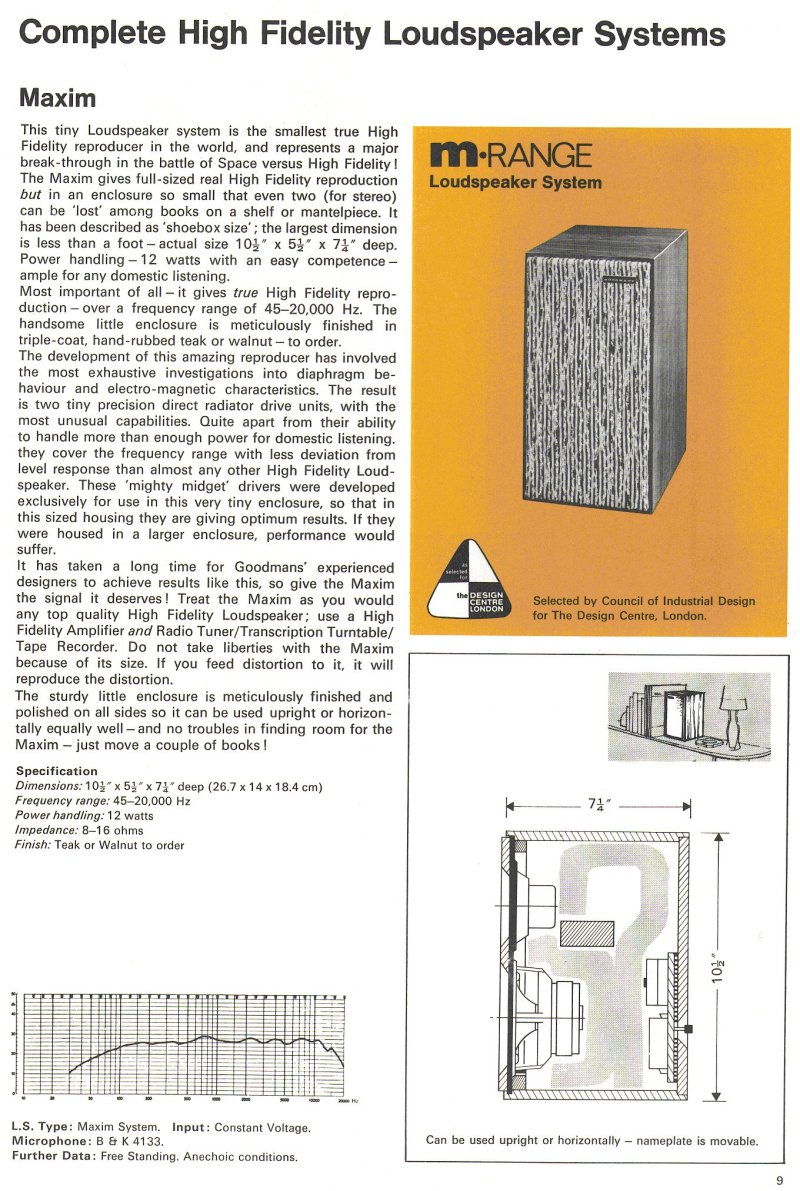ToTo Man
the band not the dog
I've had the opportunity to listen to and measure three examples of these famous mini monitors in recent years, and they all displayed the same, rather unusual voicing. There is approximately a 6dB tilt (in the wrong direction!) between the lower and upper frequencies, which gives this speaker a very bright and lean timbre. I have also included measurements of the Double Maxim and JR149 as comparison:

The Maxim's published frequency response reveals a similar trend, but not quite as extreme as my measurements:

According to Jerry Bloomfield's recent lecture at RMAF 2018, the BBC considered using the Maxim but rejected it due to manufacturing inconsistencies. In light of the above measurements I'd be surprised if the Maxim's voicing wasn't also an important factor in the BBC's decision not to use it for monitoring purposes, unless it was able to EQ it to level out the upward tilt to obtain a flat response. I actually tried this and the results were surprisingly good, it made the imaging much more convincing.

The Maxim's published frequency response reveals a similar trend, but not quite as extreme as my measurements:

According to Jerry Bloomfield's recent lecture at RMAF 2018, the BBC considered using the Maxim but rejected it due to manufacturing inconsistencies. In light of the above measurements I'd be surprised if the Maxim's voicing wasn't also an important factor in the BBC's decision not to use it for monitoring purposes, unless it was able to EQ it to level out the upward tilt to obtain a flat response. I actually tried this and the results were surprisingly good, it made the imaging much more convincing.

